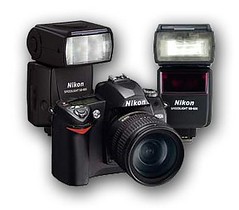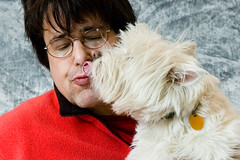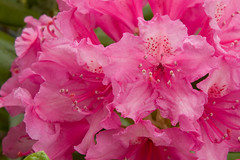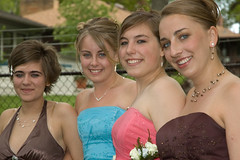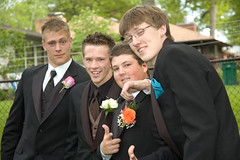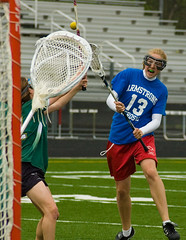Exposure: Don't be a DFU.
I've read a lot of posts ... users exclaiming the exposure is off by a couple of stops on a lot of new or newer DSLR cameras. Well ... I'm not buyin' it!!!
The civilized world successfully conquered the principles of automated production well over a hundred years ago! And have spent the time since perfecting manufacturing quality and consistency. You can't tell me that the great many users experiencing variations in the manufacture of their DSLR's accurately represents the reliability of today's manufacturing process. There has to be something wrong with the user. Stand up, shake it off crybabies! Take responsibility for your craft! Stop blaming the equipment!!!
Instead ... start to understand the source of your own misconceptions ... do the math.
Just in manual mode alone ...
Shutter from 1' to 1/8000 - 1/3 stop increments = 42 possible settings
Aperture from f/3.5 - f/32 - 1/3 stop increments = 24 possible settings
Metering - 3D Matrix, Center Weighted, Spot = 3 possible settings
Format - JPEG (B,N,F) or NEF(RAW) or both = 5 possible settings
ISO - 200 to 1600 = 10 possible settings on a D70s
That, my friends means for every single exposure you make you have to decide which of the 151,200 possible settings works best for your shot! And that doesn't count all the other variations possible when you start using the camera settings to process jpegs! Sharpening, contrast, color reproduction, saturation, and hue (just to name a few) pushing the possibilities staggeringly over half-a-million choices!
You have to develop a working knowledge about exposure that allows you to quickly narrow your choices and zoom into the one ... I repeat ... the "one" that is the best for your shot. Here's my advice ...
Keep it as simple as possible. Set everything to default. Pick one format (I use NEF(RAW) and Adobe Lightroom for processing), use manual mode and learn about exposure. If you have already learned about exposure ... re-learn it! And most of all ... use your camera a lot and use it consciously - before and after image capture!
If all you want to do is plug your DSLR into a printer and get a bunch of 4x6 prints ... you bought way too much camera.
Most of what he writes covers exactly the same thing you may have read about in innumerable printings before his. Smaller opening equals more DOF (depth of field), stop action with faster shutter speed ... blah blah blah. But he frames his teaching in very simple, practical terms that are easy to relate to and apply when shooting.
For example, he divides apertures into three groups: Story telling, who cares, and singular isolation.
Story Telling: Great depth of field where the foreground and background work together to capture the story ... both subject and environment are important to the image (f/16 and up).
Who Cares: Essentially, images where depth of field is of little concern ... subject up against a building or backdrop. Somewhere in the f/8 - f/11 range where the lens is sharpest.
Singular Isolation: You need just the subject ... no distractions from the surroundings. The closer to the subject the larger the aperture opening (f/2.8 to f/5.6) keeping the background out of focus.
These are principles that are quickly learned and applied out in the field. It can take a while to get them into practice but well worth the time and attention.
He also describes some very helpful techniques that are almost always available to you even when you don't have your camera! My personal favorites being Mr. Green Jeans and the Sky Brothers. I don't wanna spoil the ending but instead tell you that his approach is easy to understand, easy to remember, worth practicing and quick to success.
Others of you may have similar recommendations and are welcome to comment enlightening the rest of us.
Note: for the uninitiated ... DFU is programmer and help-desk speak for dumb fucking user.
i shoot nikon
